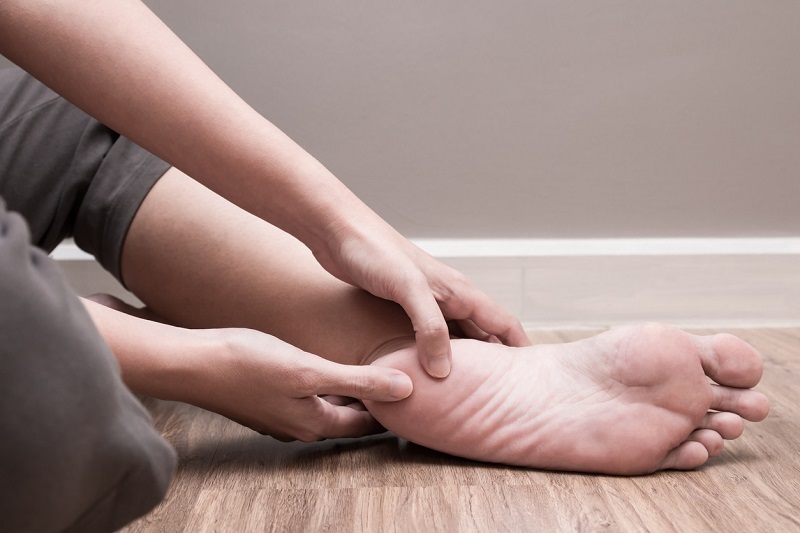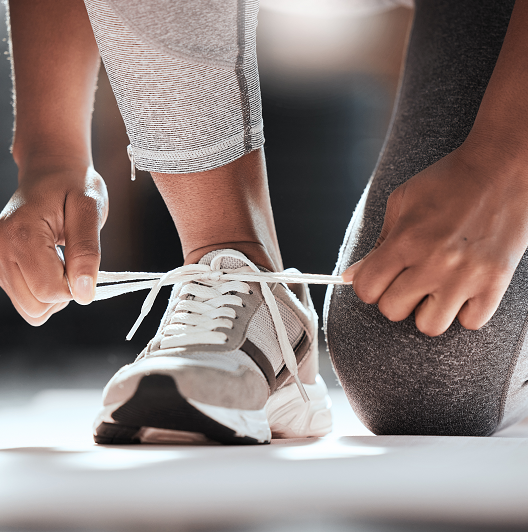Bone Spurs in the Heel: Symptoms and Recovery

January 02, 2024
A bone spur in the heel is a bony growth formed by calcium deposits. These growths, also called heel spurs, are more common among older adults and athletes.
Bone spurs in the heel may cause discomfort, but they don’t cause significant pain. They may arise in people who have plantar fasciitis, which does cause pain.
Heel spurs may develop when the heels repeatedly experience stress, trauma or pressure. In response, the body may try to improve the situation by building more bone.
“A bone spur in the heel isn’t pointy or sharp, as the name implies,” says foot and ankle surgeon, Sara Mateen, D.P.M. “It’s often smooth, but it may cause discomfort if it rubs against soft tissue.”
People are more likely to develop bone spurs in the heel if they:
- Are female (or were assigned female at birth)
- Are older adults
- Are obese
- Are runners, or have a history of pounding their feet on hard surfaces
- Wear unsupportive footwear
- Have experienced heel injuries in the past
- Have certain types of arthritis
- Have plantar fasciitis
Symptoms of Bone Spurs in the Heel
If you feel sharp, intense heel pain, it’s probably plantar fasciitis, not heel spurs. That’s caused by overuse of the ligament running along your arch to your heel.
If that ligament (the plantar fascia) tears or becomes strained, it leads to inflammation. You’ll feel significant pain in the heel and stiffness along the sole.
The symptoms of heel spurs are less intense. In fact, many people with these bone spurs don’t know that they have them.
When bone spurs in the heel cause symptoms, they may include:
- Mild pain or tenderness in the heel when you put you weight on it
- A slight bump along the heel that may be noticeable to the touch
- Calluses or corns that form at the site of heel spurs, for added cushioning
- Swelling or a feeling of warmth in your heel
These symptoms may indicate that someone has heel spurs plus plantar fasciitis:
- Intense heel pain when you stand for the first time each morning
- Heel pain that may become less intense as the day progresses, as you move
- Heel pain that makes it difficult to walk around much, due to discomfort
- Difficulty walking barefoot, because the foot isn’t cushioned by shoes
- Heel pain that becomes more significant after you run, walk or work out
How to Recover From Heel Spur Discomfort
Doctors can diagnose bone spurs of the heel by confirming their presence by X-ray. Heel spurs are very rarely surgically removed, unless they’re causing significant soft tissue damage.
Treatments are available for heel spur pain, with or without plantar fasciitis. Options include:
- Putting ice on the affected heel to help reduce inflammation
- Massaging the affected area
- Taking a break from running or activities that put extra pressure on the heel
- Using over-the-counter or prescription non-steroidal anti-inflammatory drugs (NSAIDs)
- Adding cushioning to your shoes, including inserts that support the arch, for plantar fasciitis
- Going for physical therapy, where stretching, exercise and massage therapy may help
- Wearing night splints that keep the toes from pointing downward, which worsens plantar fasciitis
- Wearing a special foot cast that allows the heel and plantar fasciitis to recover
- Getting cortisone injections in the heel, if other treatments don’t relieve extreme pain
- Switching to lower-impact forms of exercise to protect against recurrence
Your heel spurs won’t disappear with treatment, since these bony growths are permanent. But the discomfort associated with your bone spurs of the heel should fade.
To minimize a recurrence of heel spur pain, with or without plantar fasciitis:
- Wear supportive, cushioned shoes
- Switch to lower-impact forms of exercise, if high-impact exercise causes symptoms
- Stretch the back of the heel and the arch of the foot before exercising
Next Steps & Resources:
- Meet our source: Sara Mateen, D.P.M.
- To make an appointment Dr. Mateen, or another doctor near you, call 800-822-8905 or visit our website.
The material provided through HealthU is intended to be used as general information only and should not replace the advice of your physician. Always consult your physician for individual care.







